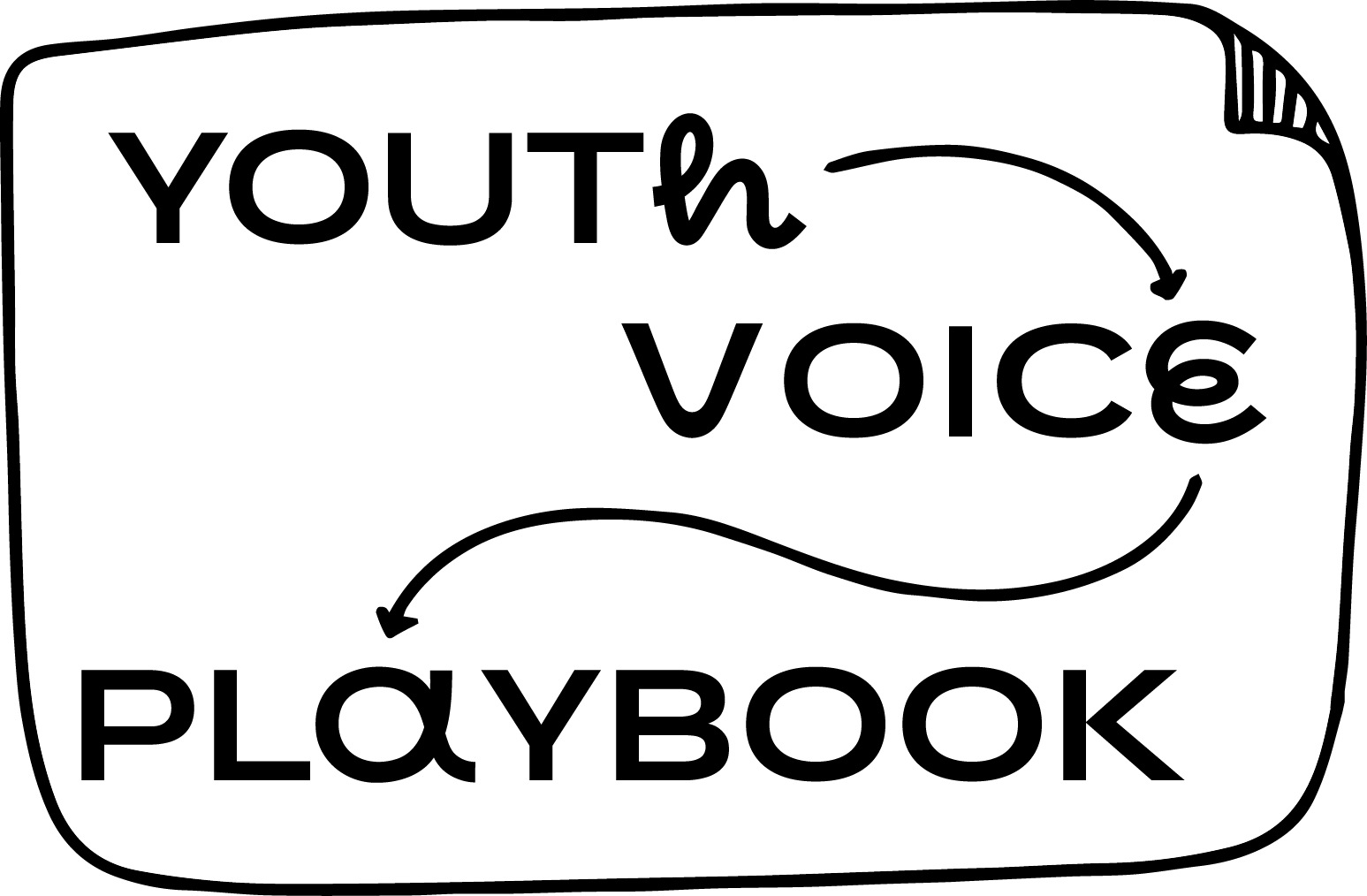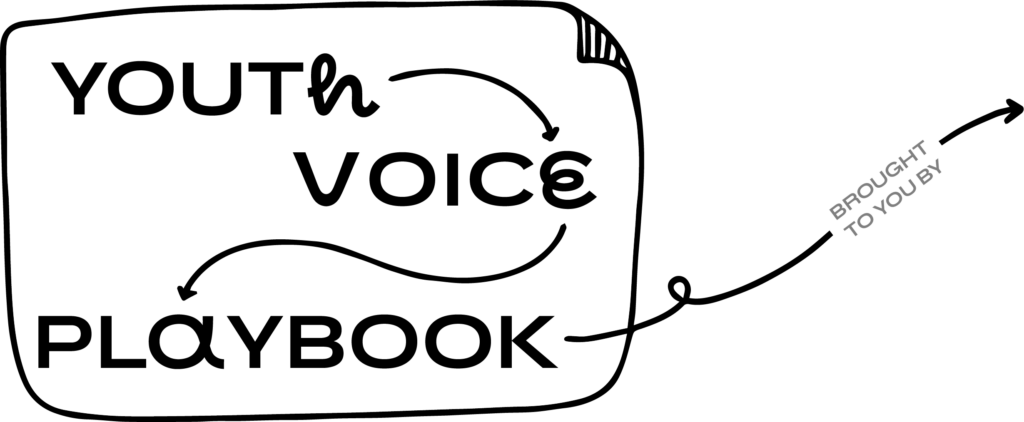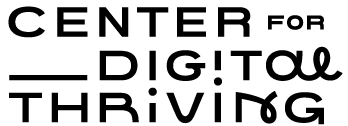I feel nervous talking to teens…
How do I set the tone so they don’t think I am a total *boomer*?
Oh shoot, I planned for this intro to take 10 minutes but…
… we started 15 minutes late and everyone’s talking more than I expected. How will we get through everything?
No matter what I ask, Tonya is always the first person to answer.
How do I make sure other people also get to share their opinions?
It seems like that question made people uncomfortable.
What should I do? Do I just move on?
This chapter will complement the many activities you just explored in chapter 5, and dig deeper into the actual how, what, where, when, why of leading a session. We will also share some best practices for tense and tricky moments, and how to begin your journey as a facilitator. Perfection is not the goal here and the best way to hone your facilitation skills is through practice!
Good facilitation is a real skill and art, and every group is different. Read this chapter for some helpful tips about how to effectively guide your group. However, remember that reading this chapter is just the beginning – you’ll get better at facilitation through practice, feedback, and coaching.
Figuring out what you want youth to do, feel, and contribute during your time together is a key place to start. As Maya Angelou said, “I’ve learned that people will forget what you said, people will forget what you did, but people will never forget how you made them feel.” These experiences are powerful and will stay with both you and the young people you work with! This chapter will guide you through ways to set the tone for productive, honest, and safe collaboration with your youth partners.
In this chapter:
- Setting norms: what are they, anyway?
- General facilitation tips we rely on
- Remember, youth are partners.
- Pay attention to power dynamics.
- Two facilitators are better than one…
- Use a good opener to build rapport.
- Orient through concise, honest storytelling.
- Be clear about what you’re here to do, and what you’re not here to do.
- Try to keep the lecturing/presentation to a minimum.
- Give clear instructions.
- Validate and affirm what is being shared.
- Be prepared to iterate on the fly.
- Pay attention to who you’re hearing from and who you’re not.
- Close with reflection and feedback.
- Navigating tense and tricky moments
- Resources, activities, and digging deeper
Setting norms: what are they, anyway?
Norms make shared values visible.
Norms are standards for group behavior that demonstrate shared values amongst the group. Setting clear norms is paramount to the success of a session. They can feel cheesy sometimes, but don’t overlook their value. In virtual spaces, it is even more important to set clear expectations around respectful engagement when it is much harder to pick up on social cues, body language, etc. As one CLIP participant stated, “Social norms are something that is very important, especially on the Zoom meetings. Without these norms our meetings would have not been as effective as they were.”
As the facilitator(s), it is your responsibility to identify what you want the session to feel like, how you want participants to share, and what boundaries the group should operate within to make everyone feel comfortable and empowered. For example, while diverse perspectives and opinions are welcomed (and should be encouraged), strong boundaries should be established to be sure no intentionally harmful or hurtful, or hateful opinions are shared. While you should draw the boundary lines in which the group operates, be open to feedback from your youth participants about these norms.
A few examples of norms we often use:
- Keep confidentiality: What is shared in the group stays in the group.
- Step up, step back: This norm is about mindful participation; it’s meant to encourage us to ‘step up’ when there’s something we want to share, even if we usually tend to hang back; and to ‘step back’ if we notice we’re speaking a lot, so we can create space for others.
- Share however feels best for you. You always have the option to share out loud, via chat, or stay quiet if you’d rather not share your view.
- No one is expected to speak for a whole group. Your identities matter and we want you to feel like you can show up here as your whole self. At the same time, no one is ever expected to speak for a whole identity group.
- It’s okay to disagree and hold different opinions. We want to hear a diversity of opinions and experiences, but we ask that even if you disagree with someone you listen to their point of view respectfully before sharing yours.
- Keep this space respectful and non-judgmental
- Aim for authenticity, listening, understanding
- Assume best intentions but acknowledge impacts: We understand that sometimes our words can be interpreted in distinct ways from our intended meaning. In this space, we are placing a value on the impact a participant may feel so that we can create a respectful and safe space for all.
Develop norms collaboratively.
It’s totally ok to come up with a list of norms prior to the meeting to get the ball rolling, but be wary of the anchoring effect this can have. If you do come with a draft, invite teens to provide feedback, suggest revisions, and share other norms/intentions that they’ve used in other spaces. Alternatively, you can develop a list of norms together during your first meeting; this can be a great way to build trust, rapport, and buy-in among the group. Once norms are shared, you can continue to edit them and build buy-in with simple prompts, like asking everyone to “add to the chat one of these that resonates with you right now” and/or “share something else you think we should add to the list.”

Example from Center for Digital Thriving
Whenever we work with youth, we carve out time to establish norms and intentions. If it is the first session, we take a minute to invite teens to add any other norms (via the chat or share out loud) and we update the list with any new norms. From that point on, in subsequent meetings with the same group, we start by reviewing the norms out loud at the beginning of the session, going around and having participants give voice to each norm. We also take time for teens to share in the chat one norm or intention they want to bring to the session (e.g., “share however feels right”, “aim for authenticity”, etc.). An example of our norms from one project is included in this chapter’s Resources section.
Encourage intention setting.
While norms are the behaviors you expect to see in the group during every session, intentions help set the tone for individuals’ participation. After sharing the norms and asking for any feedback or reactions, ask the group to set personal intentions for the session. This means asking them to identify a particular norm to focus on or a way they personally want to show up. Then, it can be a helpful icebreaker for everyone in the room to share their intention aloud, either in the full group or with a partner; this is also a great way to keep everyone accountable, adults included, as the session starts.
General facilitation tips we rely on
Remember, youth are partners.
Remember that the youth are partners, not just participants. Before the session even begins, make sure the facilitators are ready to embrace the idea of young people as thought partners, not merely research participants. This means explicitly acknowledging the expertise youth have on the topic. We asked a Character Lab CLIPster to reflect on the value of the role of the facilitator, and they shared, “Thinking back on one- on- one interviews, the researcher would try to affirm what I was saying no matter what, and made me feel like my feedback actually has merit.” For more on this topic, go back to chapter 1!
Pay attention to power dynamics.
There are lots of good strategies you can use to check your own power as adults (Walsh et al., 2013; Yip et al., 2017). Be mindful of adult air time, and explicitly invite pushback on adult assumptions and interpretations by asking questions like these:
- What are adults – including us – missing?
- What do you want to make sure adults understand about this finding?
- Are there any findings you’re afraid will be misinterpreted or skewed by adults?
An important thing to remember is this: if plans change based on what the youth are saying, or if you are put in a spot of increased emotion or conflict between participants, this means you are sharing power and getting to a more engaged place. Count this as a win (and follow up as needed to make sure your participants are OK – we will cover how to tackle tense and tricky moments later in this chapter).
Two facilitators are better than one…
… and having a young adult, near-peer, or youth co-facilitator has been especially valuable for us when it’s feasible. In virtual settings, it’s especially helpful to have multiple facilitators so one of you can handle tech (set up breakout rooms, respond to notes in the chat, take notes, etc.) while the other is talking and facilitating. That said, try to be strategic about who is facilitating which conversations and activities, and rotate leadership among facilitators as often as you can.
Use a good opener to build rapport.
It may feel silly or cheesy, but a fun opening icebreaker goes a long way! Ask everyone to introduce themselves, and also pull out your best fun questions to help loosen people up. A list of our go-to opening questions can be found in the Resources section at the end of chapter 5.
As part of breaking the ice, it can help to be sure to also frame the process as one that is going to feel “messy,” sometimes awkward, and a little unclear at times. In codesign (or participatory design), participants should feel confident at times and also uncertain at times– that place is where the magic happens! Naming this out loud can go a long way in helping reassure young people that they aren’t “missing something.”
Orient through concise, honest storytelling.
Share why they’re here, what you’re trying to figure out, and why their role is important.
Be clear about what you’re here to do, and what you’re not here to do.
It’s really important to set clear expectations about the goal of the session. We all want to know how our input is going to be used – are you here to generate lots of ideas? Take action? Be provocative? Make decisions? Whichever it is, strive to make sure everyone is clear about it from the beginning.
Try to keep the lecturing/presentation to a minimum.
When teens join our meetings, they have often been in school all day. It is important to create space to interact and engage in meaningful and fun ways. In online settings it can be especially easy to multi-task or check out, so try to make sure people are interacting right away, and try to not go more than 20 minutes without a shift in working mode or a break.
Give clear instructions.
In online environments, it can be hard to know if you’re doing the “right thing” to respond to a prompt. In person, if you’re slightly unclear on the instructions, you can just look around the room and see people start scribbling ideas in their notebooks and be like “oh ok, I guess that’s what we’re doing now” – but in a virtual setting, people sometimes miss those cues because their cat chewed on their internet wire and now it sometimes flickers in and out. So if you have an activity planned, be sure to explain it clearly, in bite-sized pieces, preferably with an accompanying visual. You can also give a tutorial while sharing your screen for participants to follow along, keep the instructions posted in writing on the screen throughout the activity, or drop the instructions in the chat. And pause for questions! Count to 10 before you move on, or say something like, ‘We can’t move on until we have at least two questions! We mean it!’
Validate and affirm what is being shared.
Remember it can feel intimidating to share, so affirming that what your youth partners are saying is helpful can be really encouraging. Without it, participants may be wondering: am I doing this right? Is this right? Was that a helpful thing to say? Do I get what’s going on?
Validation can be expressed as genuine delight, interest, or appreciation of a person’s idea. One CLIPster shared, “When I do group interviews I always feel affirmed in the opinion I present, even when I’m not sure of it myself.” Repeating a key idea or phrase can be helpful, but resist the urge to summarize everything you hear a participant say as a way to validate it. It’s also important to resist the urge to “lead the witness” by giving too much affirmation to one particular answer or opinion. Affirming young people’s responses could sound like a simple “Thanks for noting that!” or “I hear/see you.” Pause to see who else chimes in and builds upon it. Be curious about unlocking insights from these youth by providing a space where they feel valued and important.
Also, remember to validate that the teens involved are experts in being a teen, especially if you hear them second-guessing their own opinions or minimizing their own reactions. They are bringing genuine, real, important expertise that complements yours. Emphasize that their voice and guidance is incredibly valuable, as they have lived experience that research findings do not always capture. And, if you aren’t totally sure what a teen is trying to express, don’t be afraid to check for understanding. Remember, repeating back and asking for more detail is a great way to check the collective understanding of the group, and might solicit more discussion.
Be prepared to iterate on the fly.
Sometimes you’ll realize partway through a session that the activities you planned don’t really match the direction the group is heading. Maybe something really rich came out of your opening conversation, and you actually want to use the rest of the session to keep unpacking that instead of moving into other activities you planned. Give yourself permission to pivot!

Example from Center for Digital Thriving
When we were working on a digital well-being project, we planned to do some poster presentations, and then use a dot-style voting process to collectively decide on which direction to pursue from the ideas people shared. The idea was to allow people to use their dots in whatever way they wanted: putting all three on one idea, or dispersing them across different ideas. But we pivoted during the session and did something different. As people shared their posters ideas, we noted that their ideas weren’t all mutually exclusive and several ideas had key overlaps. So instead of voting on just one idea or using the “dots,” we instead asked everyone to reflect on three key things they heard through the poster presentations that they wanted to be sure were components of our final product (a toolkit we were co-creating). Their lists ultimately converged as a powerful set of design principles for the toolkit itself.
Pay attention to who you’re hearing from and who you’re not.
Sometimes there are power dynamics in the room that make some people feel less comfortable talking. Sometimes the quietest person is doing the most thinking. Pay attention to who’s taking up a lot of space and who isn’t, and use your power as a facilitator to help make room for everyone. You can do this, for example, by pausing and inviting those who have not yet spoken to share their reflections either out loud or in the chat. You may also want to offer a follow-up reflection opportunity (if your study protocol allows it), particularly to young people who seemed uncomfortable sharing in the group setting.
Close with reflection and feedback.
When closing a session, we have found it extremely valuable to give participants space to reflect, either through a closing question or activity. At the end of the session, it can be helpful to ask questions like “What do you think adults should know about this topic?” or “What didn’t we ask about that you think is important to consider?” or “What’s something you’re taking away from our session today?” Young people have so much wisdom and advice, and the answers they provide to these types of questions can create many points of connection. If we’re short on time, sometimes we’ll simply invite everyone to share a closing word or phrase.
Another helpful closing activity and compelling prompt is one that comes from Project Zero (where the Center for Digital Thriving is based) and it’s called “I used to think… Now I think…”. With this compelling thinking routine, you can learn from youth participants how their perspective may have changed through the course of your activities. As a facilitator, it can also help you begin to think about how the young peoples’ perspectives have changed how you think about the topic. We often encourage participants to modify the prompt as they see fit – for example, maybe they want to share in the format “I used to think… Now I really think…” to emphasize a view that’s gotten stronger, rather than something in their thinking that’s changed.
You can also ask for anonymous feedback on the facilitation and session structure, and then make sure to circle back to that feedback the next time you meet, e.g, “we heard X from your feedback; we’re going to try doing Y differently this time.” We will cover more on following up and closing the loop in chapter 9.
Navigating tense and tricky moments
In any synchronous facilitation session, there will be some moments where you have to “read the room” and decide how to react. Sometimes this is because an activity has gone off the rails: maybe your instructions were confusing, or people just took the conversation in a really different direction than you expected. Sometimes this is because participants said something inflammatory or offensive or insensitive, and now it’s either an uproar or crickets. Sometimes it’s because you saw or heard something that makes you worried for a participant’s safety or wellbeing. Sometimes people just seem bored or cranky or otherwise disengaged. These moments are hard! There’s often no perfect response, and every situation is different, but here are some principles to keep in mind.
Have a plan.
Always have a plan if someone indicates personal distress. This can include having resources on hand (like the 988 Suicide & Crisis Lifeline) or a designated staff member who will contact the participant and navigate the distress; for more on this, go back to chapter 2.
Be Ready to Intervene in tense moments.
Young people come with varying perspectives and it is possible that tension and disagreement might surface within a group. If this happens, it’s important to take an active role as a facilitator. It can also be really helpful to acknowledge that something just happened that changed the tone of the room, and that you might need a reset. We call this the “name it to tame it” principle, and it can be a good way to put to rest fears that you are glossing over something and just moving on. If a discussion becomes heated, we recommend a pause during the session to revisit, restate, and reaffirm agreed-upon norms. It can be especially important to reinforce agreements like “Assume best intentions and acknowledge impacts,” “It’s okay to disagree and hold different opinions,” or “No one is expected to speak for a whole identity group.” This can help (re)ground the discussion in the norms set by the group at the beginning.
Debrief after the fact…
…both with youth and with the facilitation team. Depending on the intensity of the event, you may need to follow up individually with the young people to check on how they’re feeling, unpack any concerns they have, and make sure they feel safe to continue participating.
A post-session debrief among facilitators is also really important in sessions where the s*** hits the fan – it can support reflection on facilitation moves that worked or didn’t, and also help you develop a plan for further action steps. Lastly, in some cases you may need to follow the steps for mandatory reporting or write an incident report for your IRB.
Resources, activities, and digging deeper

Stepping stones
The second stepping stone in this YPAR stepping stones series from UC Davis has a full guide on creating safe space, setting norms, navigating power dynamics, and other useful facilitation tips.

Tips for conducting focus groups
This resource from RAND includes a useful breakdown of different facilitation roles and some helpful post-session debrief questions, as well as a sample note-taking guide.

Sample moderator guide
Sometimes it’s helpful to have a detailed facilitation script, especially if you’re leading a focus group. This example from Urban Institute shows how to set the tone, collect informed consent/assent, and guide youth through various topics.

Roles for the adult facilitator
Although this resource from UpRise Movement is focused on youth boards specifically, the video still presents a helpful overview of the adult facilitator’s role in encouraging youth voice.

Co-creating community agreements
This full facilitator guide from Youth OUTright demonstrates how to lead a group of youth through the norm development process.
What to Read Next
You’re now feeling ready to facilitate a session! From setting norms and intentions all the way through navigating tricky moments and keeping the group on track, you’ve got the tools! Remember, this takes practice and perfection is not the goal. Next up, we are going to discuss how to document the rich insight you’ll get during your session, and how to reflect on the session once it is over.




























